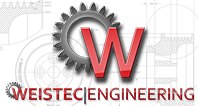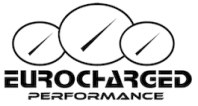Results 1 to 6 of 6
-
04-28-2014, 05:52 AM #1
 Member
Member













- Join Date
- Mar 2014
- Posts
- 812
- Rep Points
- 1,205.0
- Mentioned
- 37 Post(s)
- Rep Power
- 13
VANOS maps - Cobb vs JB4 back end flash vs stock
I look at the stock map and it''s got some strange changes as revs change, maybe to do with intake manifold harmonics. The JB4 back end flash uses what I think looks like a good start point based on what it should look like theoretically (lots of overlap down low with overlap decreasing as revs increase) and has more aggressive overlap down low than stock. I've never seen a Cobb map (really want to).
There must be a reason why the stock VANOS map looks like it does. I'll post pics wen I'm back in front of a real computer.
Anyone have any thoughts/experiences using different VANOS maps?
-
05-03-2014, 12:48 PM #2
Bump, anyone?
BRAND NEW IN BOX 991.2 standard/non-pse SPW cat bypass pipe for sale - $899 shipped
New generic 991.2 PSE bypass pipes - $499 shipped
-
05-03-2014, 06:13 PM #3
 Member
Member















- Join Date
- Dec 2012
- Location
- Florida
- Posts
- 1,613
- Rep Points
- 3,270.5
- Mentioned
- 125 Post(s)
- Rep Power
- 33
What specific part of the vanos map are you referring to? In general, you have very little overlap at idle/low load to make for smooooth idle that BMW owners like so much. At partial loads and mid RPM's you have retarded exhaust cam timing and lots of overlap for EGR effect and to reduce engine vaccuum... basically, fuel economy and emissions. At lower RPM, you will find the intake camshaft advanced to allow for better cylinder fill down low and increase torque. As RPM rises, you retard intake cam to build better high end power typically.
I plan to play with Vanos tables this summer, specifically the EGR areas since it has an effect on our dirty valve problems. The only downside is that if we dial the EGR back too much we will lose fuel economy (EGR effectively lowers the displacement of the engine by introducing inert gasses plus the overlap makes for less resistance/engine vacuum for deceleration), which will cost you more than cleaning the valves every few years. I think power wise any of the flash tunes have good values for stock or hybrid turbo's. Single turbo's not so much.
-
05-03-2014, 09:14 PM #4
 Member
Member













- Join Date
- Mar 2014
- Posts
- 812
- Rep Points
- 1,205.0
- Mentioned
- 37 Post(s)
- Rep Power
- 13
Sorry forgot to mention that the area in question is full load. The changes that look odd are when looking at one load point (say 120 or thereabouts) and noting what changes as revs increase.
-
05-04-2014, 01:50 AM #5
 Member
Member















- Join Date
- Dec 2012
- Location
- Florida
- Posts
- 1,613
- Rep Points
- 3,270.5
- Mentioned
- 125 Post(s)
- Rep Power
- 33
At one high load point as RPM increases, starting low RPM you'll have intake cam advance (open sooner before top dead center), which allows you to make more torque at lower RPM by increasing cylinder fill. For the exhaust cam, well it doesn't really matter but you can adjust it in relation to the intake cam to play with overlap and other things, it's less useful though.
As RPM increases there comes a point (V-Tec kicked in 'yo) where the advance/torque gains are less beneficial due to the air moving faster, so you want to retard the intake cam (start to open closer to TDC), which increases power as RPM increases. This should be around 4k RPM, maybe sooner, maybe later... depends on stroke, duration, blah blah blah best figured out on a dyno type stuff. Again, exhaust cam is most useful just to have moving to adjust overlap... which can effect things like dynamic compression etc etc etc but it's mostly, again, useless compared to intake other than the overlap, IMO. Best tuned on a dyno if possible again.
One thing to keep in mind on the tables, all are centerline values. Intake cam is measure ATDC in degrees so if you lower the number, you're increasing cam advance, opening the intake valve farther before TDC. The exhaust table value is measured BTDC in degrees so if you increase the number you're opening the exhaust valve CLOSER to top dead center or ADVANCING the opening event. Gotta remember that. Anyway, in the spreadsheet I made I tried to explain all this and provided editable fields where you can copy/paste intake/exhaust tables and it will calculate the LSA (lobe separation angle), which related to overlap. Although without actual cam specs, no idea what that overlap is... but a LOW LSA value = lots of overlap, a HIGH LSA value = less overlap.
If I'm missing anything someone please correct me... Chevy's didn't have VVT
Edited, had it mixed the first time.Last edited by V8Bait; 05-04-2014 at 01:58 AM.
-
05-04-2014, 05:29 PM #6
 Member
Member













- Join Date
- Mar 2014
- Posts
- 812
- Rep Points
- 1,205.0
- Mentioned
- 37 Post(s)
- Rep Power
- 13
I understand all of that and that is how the JB4 back end flash is and the overall trend of the stock map but the stock map both advances and retards at various rpm points quite a bit.




 Quote
Quote











Hey...
We welcome terahertz5k